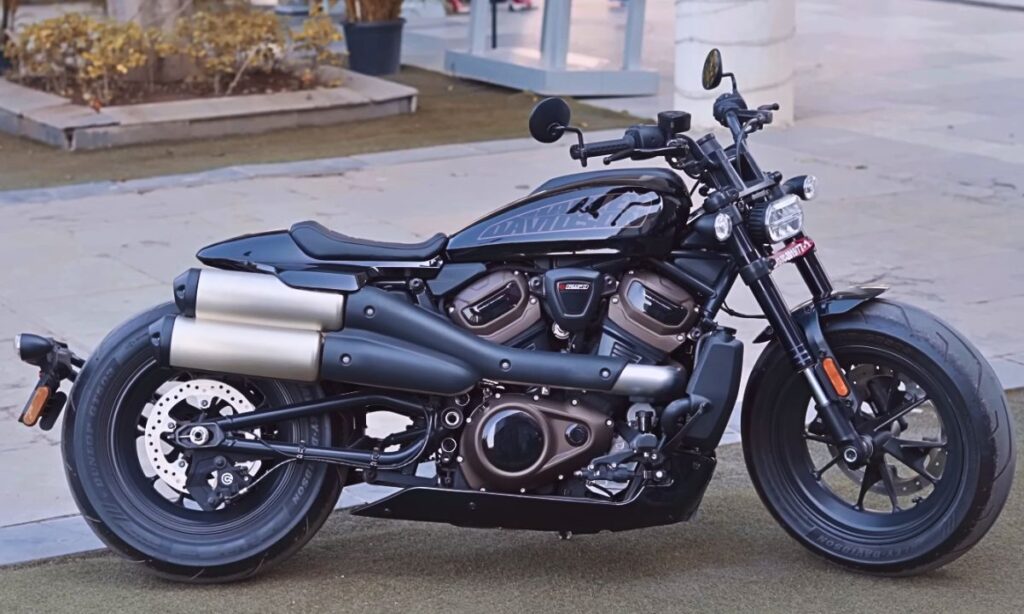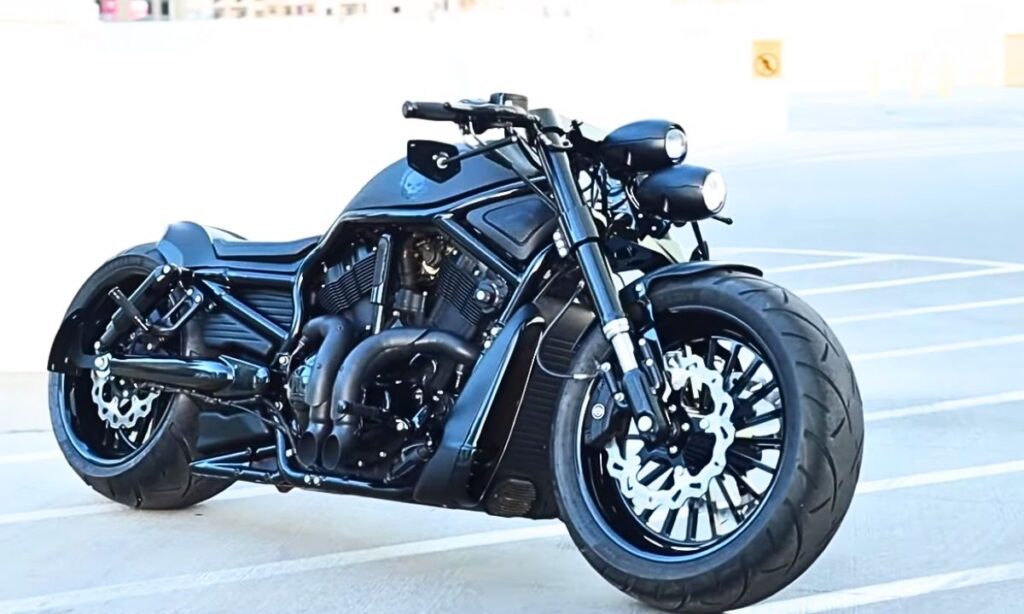If you are a mechanic or Harley Davidson owner, then having the right tools is essential to ensure the optimal performance of your motorcycle.
Having the Harley fluid capacity chart is one of the essential tools that you need for your Harley.
In this article, we will explore the Harley Davidson fluid capacity chart, how you can change oils and how often you should change oils.
Why Do You Need Harley Davidson Fluid Capacity Chart?
The Harley Davidson, Fluid Capacity Chart, is a beneficial tool for motorcycle enthusiasts and owners.
It provides detailed information about the required fluid capacity for different models of Harley-Davidson motorcycles.
The Chart offers specifics on the volume of engine oil, transmission fluid, and primary drive oil needed for each model.
This precise measurement enables smooth performance, reducing wear and tear of engine components, thereby extending the life of your Harley Davidson.
Mistakes such as overfilling or underfilling of fluids can lead to mechanical issues, damage, and unnecessary expense. So, the Chart is a valuable guide to avoid such pitfalls.
The Chart is also a great reference tool during routine maintenance and fluid changes.
It allows for efficient preparation, ensuring you have the exact amount of necessary fluids at hand before you start the process, which can save you time and avoid interrupted maintenance sessions.
Harley Davidson Fluid Capacity Chart

The Chart provides essential information on oil, brake fluid, and transmission fluid capacities, ensuring optimal performance and longevity of your motorcycle.
Whether you’re conducting routine maintenance or troubleshooting, the Chart is an invaluable resource for you.
Here is the fluid capacity chart:
| Harley Davidson Motorbikes | Engine Fluid Capacity | Transmission Fluid Capacity | Fork Fluid Capacity |
| Harley Davidson Fat Boy | 3.5 Quarts | 24-28 Ounces | 12-19 Ounces |
| Harley Davidson Dyna Wide Glide | 3 Quarts | 24-28 Ounces | 9-10 Ounces |
| Harley Davidson Softail | 1 Quart | 20-28 Ounces | 9-10 Ounces |
| Harley Davidson Road King | 3.5-4 Quarts | 24 Ounces | 9-12 Ounces |
| Harley Davidson Sportster | 3.5 Quarts | 1 Quart | 9-12 Ounces |
Types of Fluid Needed for Harley Davidson Motorcycle
Harley-Davidson motorcycles, known for their iconic design and performance, require different types of fluids to function optimally.
These include engine oil, the lifeblood of the engine, which lubricates and cools the internal components.
Here are the types of fluid which Harley needed:
1. Engine Fluid
Engine fluid, also known as engine oil, is crucial for the smooth operation of a Harley motorcycle. It acts as a lubricant, minimizing the friction between moving parts within the engine to prevent overheating.
Harley recommends using their proprietary “Harley Davidson 360 Motorcycle Oil” for optimal performance.
This oil is specifically formulated to maintain viscosity in extreme temperatures, provide superior wear protection, and promote cleanliness.
Remember, regular engine oil changes are essential for maximizing your Harley Davidson’s lifespan and maintaining its powerful performance.
2. Brake Fluid
Brake fluid is a crucial component to keep your Harley braking system functioning optimally.
This high-performance hydraulic fluid enables the transmission of force within the brake lines, facilitating the stopping or slowing down of the motorcycle.
It’s important to note that brake fluid is typically classified into different types, mainly DOT3, DOT4, and DOT5, each with distinct boiling points and compatibility.
For Harley Davidson motorcycles, the manufacturer usually recommends DOT4 or DOT5 for better results.
3. Transmission Fluid
Transmission fluid ensures smooth gear shifts, prevents wear and tear of gears, and assists in heat dissipation.
Harley recommends using their proprietary transmission fluid, Harley Formula + Transmission and Primary Chaincase Lubricant, for the best performance.
However, if that’s not available, other high-quality synthetic transmission fluids are also acceptable.
4. Fork Fluid
Fork fluid, or fork oil, helps manage the damping control in the front suspension system and contributes to the overall handling and ride comfort of the bike.
Regular inspection and replacement of the fork fluid can prevent premature wear of the suspension components and ensure a smoother and more responsive ride.
The type and viscosity of fork fluid may vary depending on the model and year of the Harley, so always consider the type of fluid for your specific model.
5. Primary Chaincase Lubricant
Primary Chaincase Lubricant plays a crucial role in ensuring the smooth operation of your Harley primary drive system.
This special lubricant is designed to reduce friction among the clutch plates and primary chain, minimizing wear and tear.
The right viscosity of this lubricant ensures optimal performance, while its heat-resistant qualities prevent it from breaking down, even under the stress of high speed.
You should replace the lubricant after every 20,000 miles to maintain the longevity and high performance of your Harley.
How Often Do I Change the Fluid on My Harley Davidson Motorcycle?
Maintaining your Harley Davidson motorcycle to its optimum performance requires regular fluid changes.
Here are the complete details for how often you should change the oils:
1. Primary Chaincase Lubricant
Harley Davidson recommends changing the primary chaincase lubricant every 5,000 miles.
The process involves draining the old fluid, cleaning the drain plug, and refilling it with fresh lubricant.
2. Transmission Fluid
The transmission fluid should be changed every 5,000 to 10,000 miles.
3. Fork Fluid
The fork fluid doesn’t need to be changed as frequently. Harley Davidson suggests changing this fluid every 20,000 miles.
A professional might be needed for this task, as it involves disassembling and reassembling the front fork.
4. Engine Fluid
Engine oil should be changed every 2,500 to 5,000 miles.
5. Brake Fluid
Harley recommends replacing brake fluid every 1 to 2 years, regardless of mileage.
How You Can Change The Oils On Your Harley Davidson?
To properly maintain your Harley Davidson, it’s crucial to regularly change these five fluids:
1. Primary Chaincase Lubricant
First, locate your motorcycle’s drain plug. It’s typically found underneath the primary chaincase.
Remove this plug and let the oil drain out. Once the old oil is completely drained, replace the plug and add new lubricant through the fill plug.
2. Transmission Fluid
Firstly, locate the transmission drain plug. Usually, the transmission drain plug is located beneath the transmission housing.
Remove this plug to drain the old fluid. Replace the plug once the fluid is fully drained, then locate the transmission dipstick or fill plug. Add new fluid until it reaches the correct level.
3. Fork Fluid
Changing fork oil is a bit more complex. First, remove the front wheel and forks. Empty the old fluid from the forks and pump them to expel any remaining fluid.
Fill the forks with new fluid and pump them to ensure they are properly lubricated. Reassemble the forks and wheel.
4. Engine Fluid
Find the engine’s drain plug, remove it, and let the oil drain. Once the old oil is drained, replace the plug and fill it with new oil at the fill point.
5. Brake Fluid
For brake fluid, locate the brake fluid reservoir and remove the cover. Use a brake fluid pump to remove the old fluid. Refill the reservoir with new fluid and replace the cover.
Disclaimer
Remember to always refer to your Harley Davidson’s specific service manual for the exact locations of these drains and fill plugs and for the recommended fluid types and levels.
Also, ensure the bike is cool before performing any of these maintenance tasks to avoid burns.

Tonmoy, the brains behind the influential motorcycle-focused website, TwoWheller.com, is a dedicated and passionate advocate for biking culture. Born and raised in a family of motorcycle enthusiasts, his love for two-wheeled transportation was ignited at an early age. His commitment to providing in-depth reviews and helpful tips for riders has established him as a respected figure in the motorcycle community.

